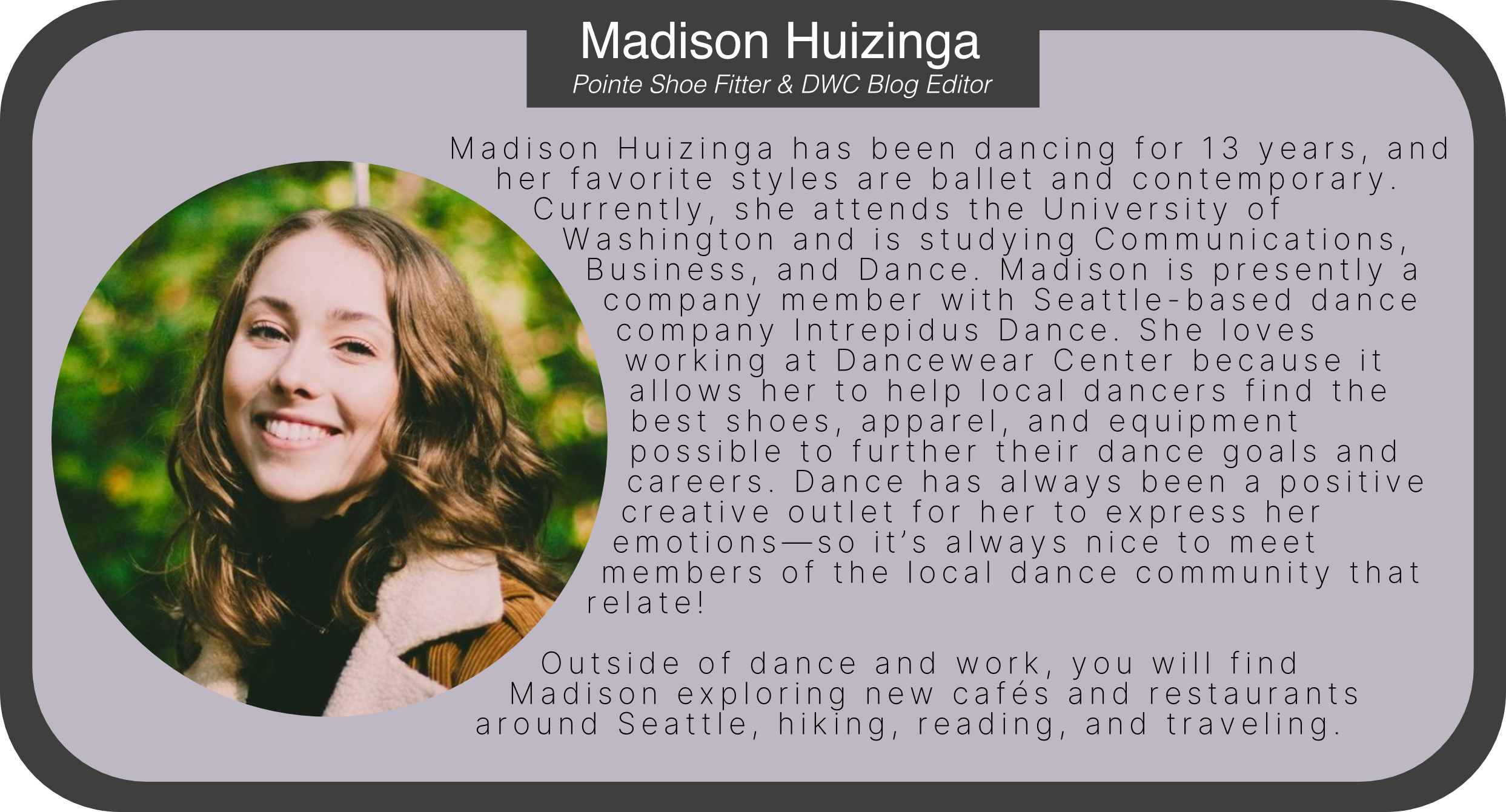Tips For Setting Dance Resolutions For the New Year
By Madison Huizinga, DWC Blog Editor
Before the start of a new year, it’s commonplace for people to set goals they hope to achieve following 11:59 PM on December 31. People set goals of all shapes and sizes, some small and realistic and others large and out of proportion.
As dancers, we’re well-aware of what it’s like to work towards goals we set for ourselves and goals that others set for us. In dance class, it often feels like there is always something we are working to improve upon. Sometimes within our dance training, setting goals can feel futile, particularly when we start comparing ourselves to others. It can also be challenging to know where to begin. For instance, a consistent goal I have for myself within my dance training is improving my turn-out. But what exactly do I mean by that? How will I measure my progress towards achieving this goal? Is there a deadline I want to achieve this goal by? And how on Earth do I begin? Rather than having questions like these swirling around your head, it’s much more effective to make a plan. Fortunately, utilizing strategies like the SMART goals acronym and planner tools like Whimsy & Rhyme’s “Pirouette Planner” can help you out.
The SMART goals concept is widely discussed in academic and professional settings. The acronym was first written about in the November 1981 issue of Management Review by George T. Doran, and since then has received wide praise in a variety of industries. Each letter in the SMART acronym stands for a specific attribute you should make your goals, to ensure they are clearly defined and achievable.
The S stands for specific. The goal you set for yourself should refer to a particular objective you hope to achieve. The more details, the better. For instance, if your New Year’s resolution is that you want to “improve your extension,” that doesn’t provide enough information to help you work towards achieving that goal. However, if you reframe the resolution as wanting to be able to “hold your extension at a 90-degree angle,” that provides a clearer target to aim for.
The M stands for measurable. How will you track your progress towards achieving that goal? Once you outline the specific details of your goal, you will have greater clarity on how exactly you can measure your progress. Let’s say you hope to “eat more vegetables” in 2022. A way to measure progress towards that goal would be to set a target quantity of vegetables to purchase at the grocery store each week. That way, you can have an actual, quantifiable metric to determine whether or not you are working towards that objective.
Photo by Alexandre Dinaut from Unsplash
The A stands for achievable. Is the goal you’re setting for yourself doable? Do you have the time, energy, and resources to be able to accomplish it? If you are a perfectionist, it can be common to set a goal that’s out of the scope of what you can actually accomplish. However, it’s much more effective to set a goal for yourself that is challenging, but still attainable, and then set increasingly challenging goals from there. If I’m working on landing a double pirouette, setting a goal for myself to nail a quad pirouette is probably unattainable. Once I land that double though, I can up the challenge for myself!
The R stands for relevant. Is this goal necessary to achieve your larger mission? In the age of social media, it can feel like we’re constantly being bombarded by pictures and videos of advanced and professional dancers showing off their extreme strength and flexibility. While such feats may look cool in photos and short-form videos, we shouldn’t necessarily work towards them if they’re not relevant to our actual dance training goals. Being able to perform a “needle” stretch successfully can look exciting, but what’s more important is ensuring that we’re setting goals for ourselves that advance our technique in safe and healthy ways.
Finally, the T stands for time-bound. Another useful way to ensure that you actually accomplish the goal you set for yourself is to set deadlines to mark your progress. Some goals may take a few weeks or months to accomplish and others may take the entire year. Whatever time frame you have in mind, set some realistic markers along the way to ensure that you’re making the progress you want to.
A particularly helpful tool for marking your goal progress is a planner. The Pirouette Planner by Whimsy and Rhyme available at Dancewear Center is an especially useful planner for dancers, as it was designed for dancers by dancers. The Pirouette Planner is designed to help dancers maintain an organized schedule to help them reach their goals. Each month contains a coaching page on a different, specialized topic, including nutrition, audition preparation, team building, and more. There are also guided journaling prompts and areas to track stretching and strengthening activities, class corrections, and observations, as well as daily expressions of gratitude.
By following the SMART goals acronym and utilizing tools like the Pirouette Planner, we dancers can be on our way to achieving our goals. Let’s set ourselves up for success in 2022!



